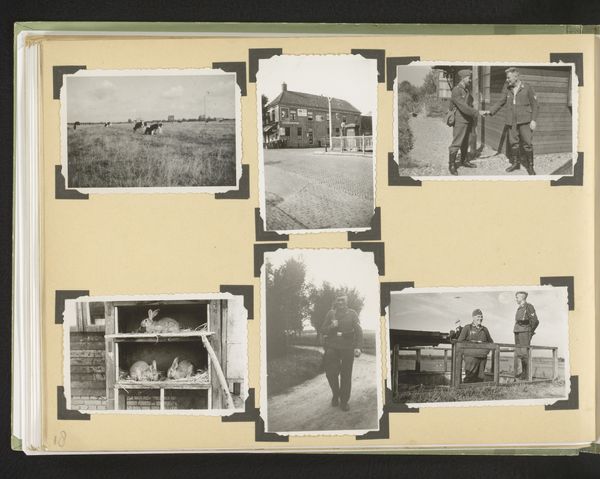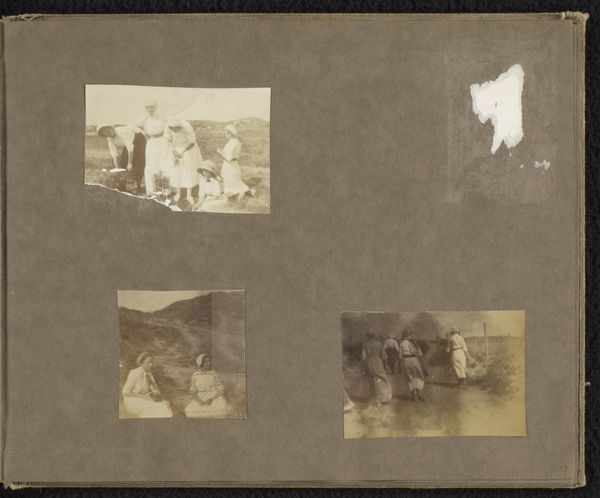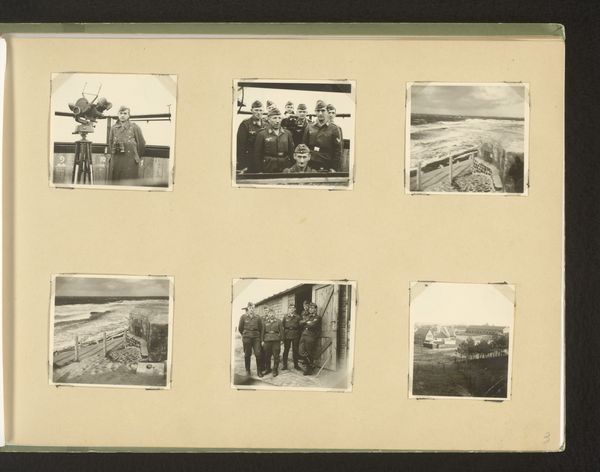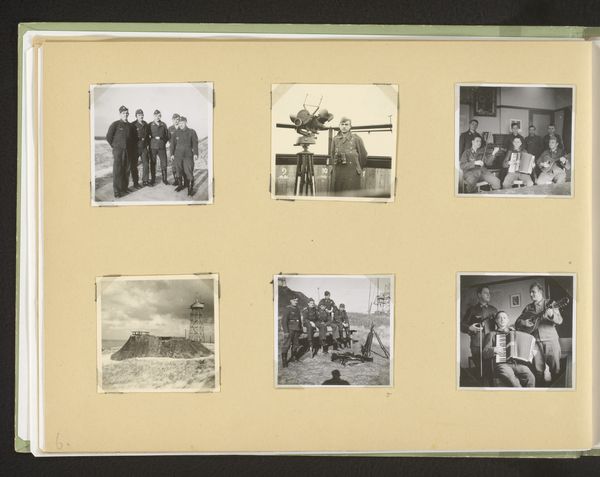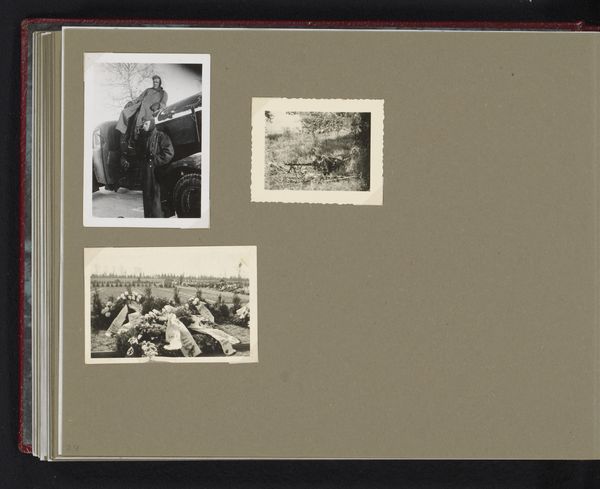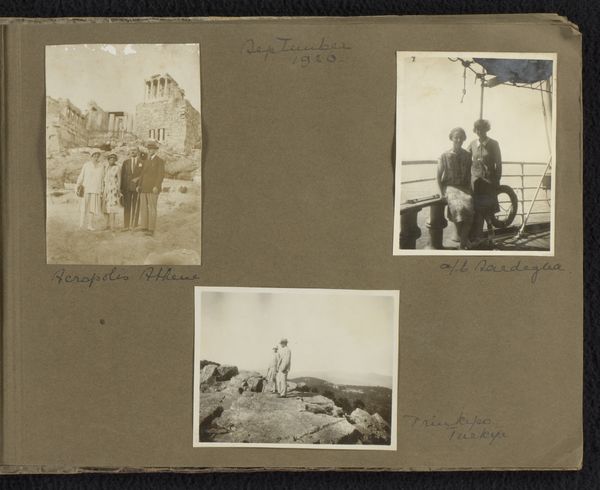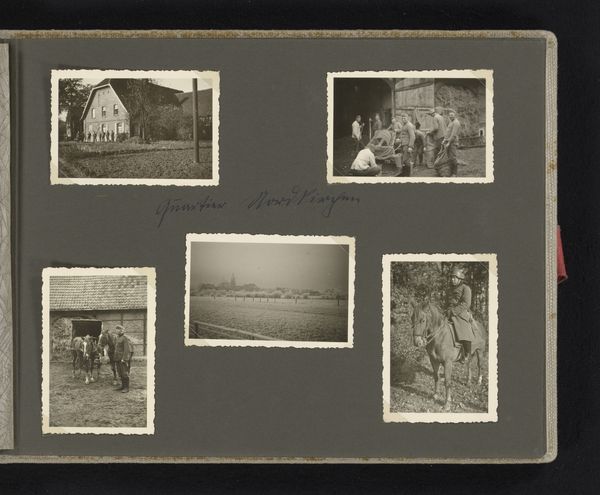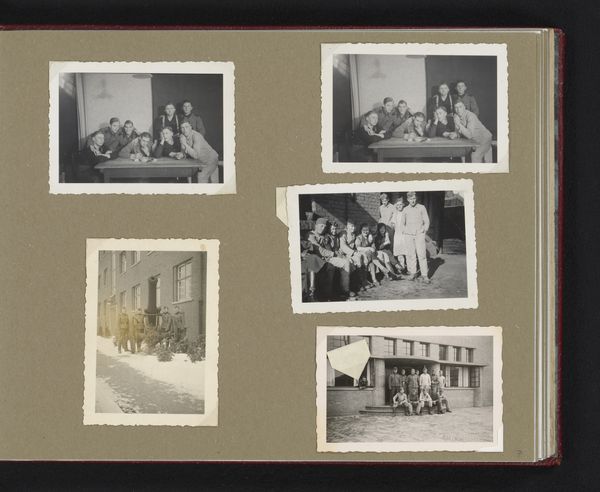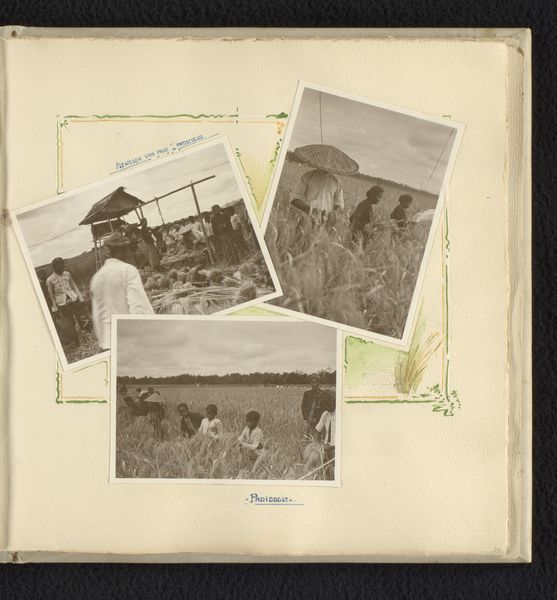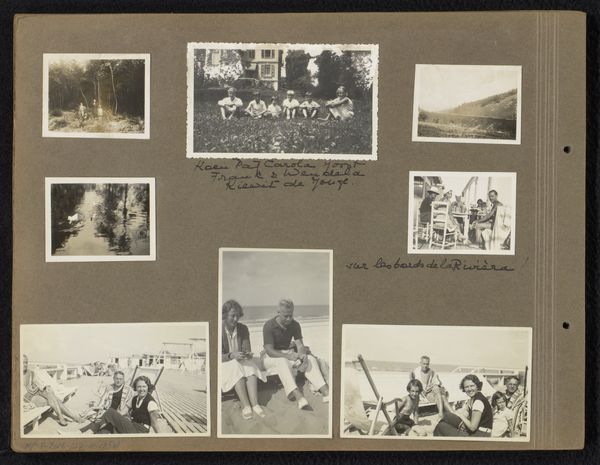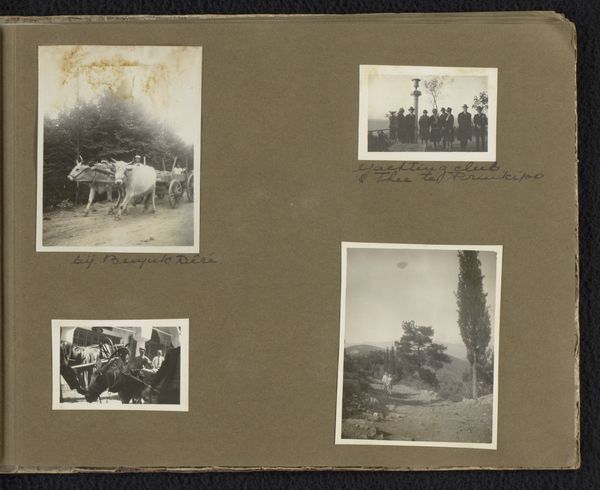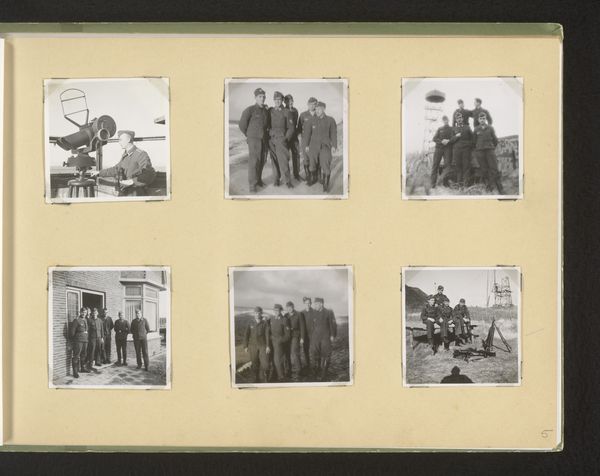
photography, gelatin-silver-print
#
portrait
#
photography
#
group-portraits
#
gelatin-silver-print
#
history-painting
#
realism
Dimensions: height 60 mm, width 90 mm, height 195 mm, width 292 mm
Copyright: Rijks Museum: Open Domain
Editor: This is an intriguing page from a photo album, simply titled "Groep Duitse militairen in en op de bunker," or "Group of German soldiers in and on the bunker," dating from between 1940 and 1944. The photos, gelatin silver prints, feel almost banal given their heavy subject matter. What strikes you about this piece? Curator: These are striking precisely because of their apparent banality. We are looking at the carefully constructed public image the Wehrmacht projected during wartime. Notice how these photographs echo prevalent themes of camaraderie and normality, designed to legitimize the occupation. Editor: Legitimize in what way? It's a snapshot, not a propaganda poster, or is it? Curator: Think about it – the presentation is crucial. This is part of an album. What narrative are we constructing when the brutality of the war is interspersed with 'ordinary' activities? Consider how institutional frameworks of the military demanded an ideal of uniformity. Each soldier must fit into the system. It echoes in these group portrait settings; can we discern personal identity, or does the image overwhelm it? Editor: So you're saying it isn't just a casual collection of images but part of constructing a very specific historical viewpoint? How would a contemporary viewer have interpreted them? Curator: Undoubtedly through the lens of censorship and carefully controlled media. These images contributed to constructing a controlled memory of the occupation for both the perpetrators and occupied, normalizing military presence as part of daily existence. This speaks to the immense power in photography when documenting contested space during moments of crisis. Editor: It’s disturbing to realize how carefully curated even personal albums could be within a larger sociopolitical framework. This really changes how I see seemingly "everyday" photographs from the era. Curator: Exactly! We must question, "Who took these photos? Why, and for what purpose?" History resides in the intention behind creating, curating, and circulating imagery.
Comments
No comments
Be the first to comment and join the conversation on the ultimate creative platform.
